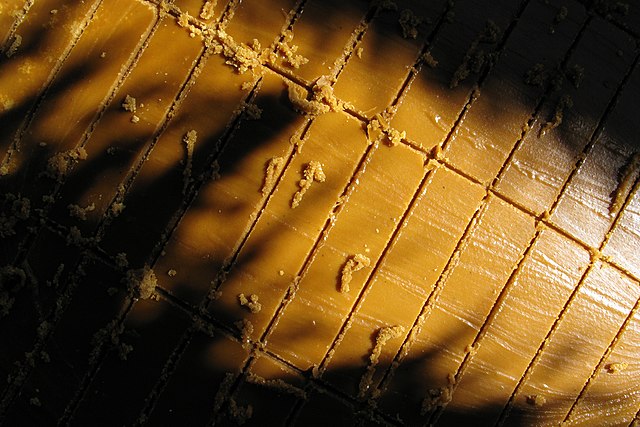Non-centrifugal cane sugar
Non-centrifugal cane sugar (NCS) is the technical name given to traditional raw sugar obtained by evaporating water from sugarcane juice. NCS is internationally recognized as a discrete and unique product by the FAO since 1964 and by the World Customs Organization (WCO) since 2007. WCO defines NCS as "cane sugar obtained without centrifugation". It also states that "the product contains only natural anhedral micro-crystals, of irregular shape, not visible to the naked eye, which are surrounded by molasses' residues and other constituents of sugar cane". NCS is produced in most sugarcane-growing regions of the world, being known by many different names such as panela, jaggery, or gur. Some varieties of muscovado are non-centrifugal.
Jaggery, non-centrifugal cane sugar, Myanmar.
Sugar cane juice boiling, Myanmar.
Panela or rapadura is an unrefined whole cane sugar, typical of Latin America. It is a solid form of sucrose derived from the boiling and evaporation of sugarcane juice. Panela is known by other names in Latin America, such as chancaca in Chile, Bolivia, and Peru, piloncillo in Mexico. Just like brown sugar, two varieties of piloncillo are available; one is lighter (blanco) and one darker (oscuro). Unrefined, it is commonly used in Mexico, where it has been around for at least 500 years. Made from crushed sugar cane, the juice is collected, boiled, and poured into molds, where it hardens into blocks. It is similar to jaggery, which is used in South Asia. Both are considered non-centrifugal cane sugars.
Panela
Brazilian rapadura in tablet
Mexican café de olla served with a lump of piloncillo
Claimed to be the world's largest rapadura, on display on a farm southeast of Fortaleza, Ceara






